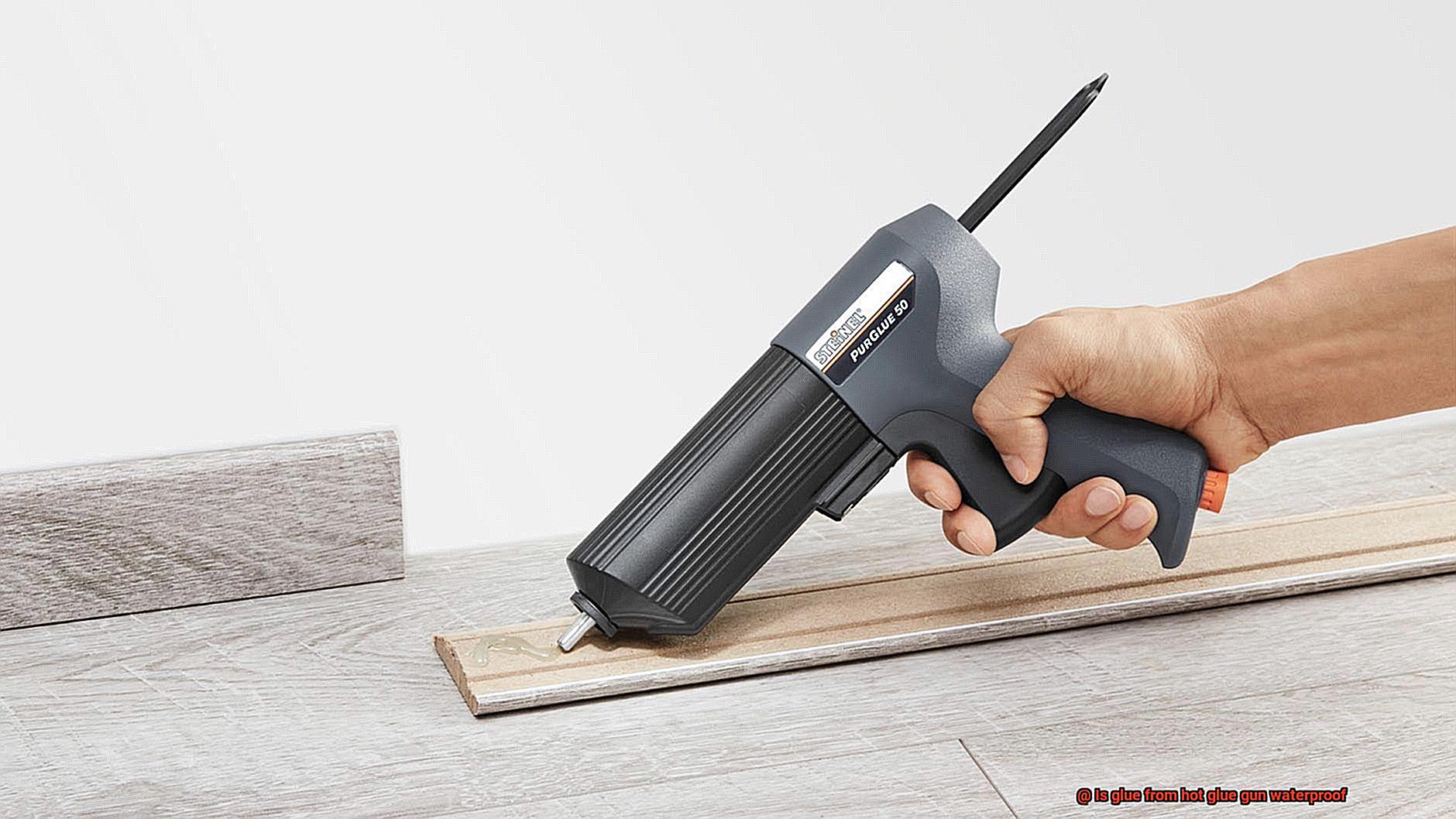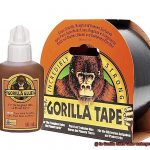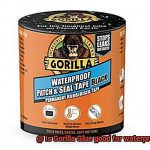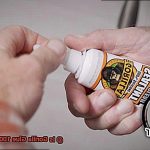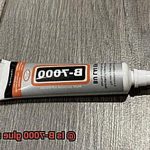Are you a DIY enthusiast or crafter who loves to experiment with hot glue guns? If so, you may have wondered whether the glue from a hot glue gun is waterproof. After all, it’s essential to know if your project can withstand exposure to water.
Hot glue is a versatile adhesive that dries quickly and can be used on various surfaces such as paper, fabric, and metal. However, when it comes to its water resistance, the answer isn’t as simple.
In this blog post, we’ll explore the question of whether hot glue is waterproof and what factors determine its ability to resist water. We’ll also take a closer look at the different types of hot glue available and which ones are best suited for projects that may come into contact with water.
So if you’re planning to use hot glue on an item that needs to withstand exposure to water, this article is for you. We’ve got all the information you need to ensure your creation is not only beautiful but also durable and long-lasting. So let’s dive in together.
What is Hot Glue?
Contents
This adhesive is a go-to for crafting, woodworking, and repairs.
Hot glue is made of thermoplastic material that melts when heated and solidifies quickly when cooled. It’s commonly applied using a hot glue gun and comes in clear or white varieties. Clear hot glue is perfect for visible adhesive applications, while white hot glue is ideal for hidden or painted-over gluing.
Hot glue offers many benefits, including its speedy drying time, which makes it perfect for fast bonding. It’s also versatile and can bond to various surfaces like paper, cardboard, plastic, and wood. However, it’s not suitable for high-temperature environments as it can melt and lose its adhesive properties.
One question many people have about hot glue is whether it’s waterproof. The answer is that it depends on several factors. Firstly, not all hot glue sticks are waterproof. Some sticks are designed for specific purposes and may not be suitable for use in wet environments. For example, low-temperature hot glue sticks work best for bonding delicate materials such as foam or fabric but may not hold up against water exposure. In contrast, high-temperature hot glue sticks are more durable and can withstand dampness and moisture.
Secondly, the surface the hot glue is applied to will also affect its waterproofing ability. Hot glue adheres well to porous surfaces such as wood and cardboard but may not hold up against non-porous surfaces like metal or plastic. Moreover, if there are any gaps or holes in the surface, water can seep through and weaken the bond.
Finally, the conditions the glued object will be exposed to determine whether the hot glue will remain waterproof. If the object is regularly exposed to water or high humidity, it may weaken over time and lose its adhesive properties. However, if the object is only occasionally exposed to water or kept in a dry environment, then hot glue can provide a strong and long-lasting bond.
Types of Hot Glue Sticks
Hot glue sticks are a versatile adhesive that can be used for various bonding applications. However, not all hot glue sticks are created equal. In fact, there are several types of hot glue sticks available, each with its own unique properties and intended use.
The two most common types of hot glue sticks are made from EVA (ethylene-vinyl acetate) or polyamide (PA) materials. EVA hot glue sticks are popular because they are affordable and straightforward to use. They are ideal for bonding porous materials like foam, paper, and cardboard. However, they may not be suitable for non-porous surfaces like metal or plastic.

On the other hand, PA hot glue sticks are more expensive but offer a more robust bond and can adhere to non-porous surfaces. This makes them perfect for industrial applications such as those in the automotive and construction industries where a durable bond is necessary.
If you’re working with delicate materials that may melt or warp at high temperatures, low-temperature hot glue sticks are the way to go. These specialized hot glue sticks have a lower melting point than regular hot glue sticks, making them safer to use on sensitive materials like fabrics and plastics.
The Surface and Its Role in Waterproofing
The type of material and its porosity can have a significant impact on how effective hot glue is in creating a waterproof seal.
For non-porous surfaces like glass or metal, hot glue can create a strong and tight bond that can withstand moisture and even some water pressure. As the glue cools and solidifies at a high temperature, it forms a durable seal. However, keep in mind that prolonged exposure to water may cause the glue to break down over time.
On the other hand, porous surfaces like wood or fabric present a challenge for creating a waterproof seal with hot glue. The glue may not penetrate deep enough into the material to create a strong bond, and any gaps or holes in the surface could allow water to seep through. In such cases, additional waterproofing measures such as sealants or coatings may be necessary.
It’s also essential to consider the temperature and humidity conditions that the glued item will be exposed to. Extreme temperatures or high humidity can weaken the bond of hot glue and make it more susceptible to water damage.
Environmental Factors and Waterproofing
The reason for this could be attributed to environmental factors and surface preparation.
Humidity and temperature are two crucial factors that can impact the performance of hot glue gun glue. High humidity levels can cause the glue to become softer and less adhesive, which can compromise its ability to keep water out. On the other hand, extreme temperatures can cause the glue to expand or contract, which may also affect its waterproofing capabilities.
Another critical factor to consider is exposure to water or moisture. If the glue is constantly exposed to water, it may eventually break down and lose its adhesive properties. Therefore, it is essential to ensure that the surface being glued is completely dry before applying hot glue gun glue.
However, even if the surface is dry and the humidity and temperature are optimal, certain types of surfaces may require special preparation before applying hot glue gun glue. For instance, porous surfaces such as wood or fabric may require a sealant or primer to be applied before using hot glue gun glue in order to prevent water from seeping through.
Tips for Working with Hot Glue
Hot glue guns are a versatile tool that can be used for a wide range of crafting, DIY projects, and repairs. However, working with hot glue can be a bit intimidating, especially if you’re new to it. But don’t worry. With the right tips and tricks, you can become a hot glue pro in no time.
Choose the Right Temperature
The first tip to keep in mind when working with hot glue is to choose the right temperature for your glue gun. High-temperature glue guns are great for bonding materials that require a strong hold, such as wood and metal. Meanwhile, low-temperature glue guns are better suited for delicate materials that could be damaged by high heat, such as foam or fabric.
Prepare Your Workspace
Before you start using your hot glue gun, prepare your workspace. Lay down some newspaper or a silicone mat to protect your surface from any drips or spills. Having a bowl of ice water nearby is also helpful in case of accidental burns.
Use the Right Amount of Glue
When it comes to hot glue, less is often more. It’s important to use the right amount of glue for your project. Too much glue can cause a mess and take longer to dry, while too little won’t provide a strong hold. A good rule of thumb is to use a pea-sized amount of glue per square inch of surface area.
Work Quickly
One of the most significant advantages of hot glue is that it dries quickly. However, this also means that you need to work quickly and efficiently when using it. Make sure you have all your materials ready before starting and plan out your steps ahead of time.
Be Careful
Lastly, always be careful when handling hot glue. The glue can reach high temperatures and can cause burns if it comes into contact with skin. It’s recommended to wear gloves or use tools such as tweezers or pliers to handle the glue while it’s still hot. Also, keep your fingers away from the tip of the gun and avoid touching the hot glue until it has completely cooled.
ZiCuyLpMW3s” >
Also Read: Is Hot Glue Toxic? – Glue Things
Conclusion
In conclusion, hot glue is a jack-of-all-trades adhesive that can work wonders for an array of projects. But when it comes to its waterproofing capabilities, the answer isn’t as cut and dry. The ability of hot glue to resist water depends on several factors such as the type of hot glue stick used, the surface it’s applied to, and the conditions it will be exposed to.
To ensure your project stays watertight, it’s crucial to choose the right type of hot glue stick. Low-temperature hot glue sticks are perfect for delicate materials like foam or fabric but may not withstand water exposure. High-temperature hot glue sticks are more durable and can handle dampness and moisture with ease.
The surface being glued is also a critical factor in determining the waterproofing ability of hot glue. Non-porous surfaces like glass or metal create a strong bond that can resist moisture and even some water pressure. Conversely, porous surfaces like wood or fabric pose a challenge for creating a waterproof seal with hot glue.
Lastly, environmental factors such as humidity and temperature can impact the performance of hot glue gun glue. To ensure maximum effectiveness, make sure that the surface being glued is completely dry before applying any hot glue gun glue.
In summary, mastering the art of using hot glue requires careful consideration of various factors to ensure its effectiveness in creating a waterproof seal.

